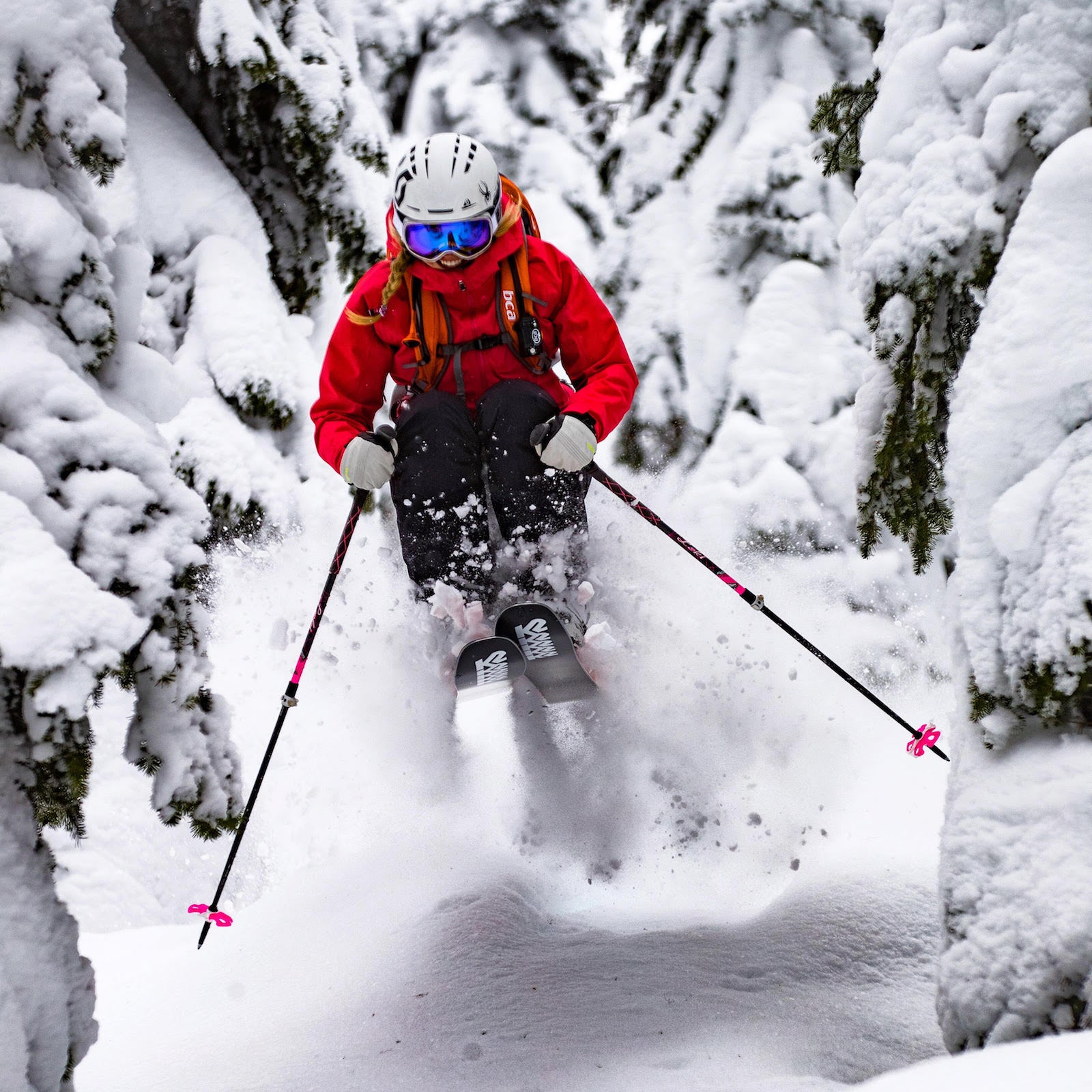╠řwas skiing before her first birthday, thanks to her dad, ski photographer Jeff Engerbretson. By all accounts╠řshe was born into the sport, but at╠ř13╠řshe╠řquit ski racing to pursue ballet. In her twenties, she came back to the╠řrugged peaks surrounding Lake Tahoe and started her career as a professional skier. ÔÇťMy physical history is in dancing in the most extreme way,ÔÇŁ she says. ÔÇťI think that background has set up me╠řwell for skiing, because itÔÇÖs all about awareness, discipline, and knowing where your body is.ÔÇŁ Years of dancing honed her balance and stability╠řand taught╠řto use╠řher body as a complete system instead of╠řisolated muscles. She trains with that sensibility in mind. ÔÇťI think itÔÇÖs really important when youÔÇÖre in preseason training to╠řpay attention to your core, back, and stabilizers, not just your legs,ÔÇŁ Engerbretson says.
We asked╠řthe Warren Miller athlete, who also has a background teaching barre and dance, to share╠řher favorite╠řdance-inspired workout routine. These do-anywhere exercises help with coordination and range of motion. If they feel╠řeasy, think like a ballerina and check your posture. Small-scale╠řbodyweight movements take grace and control╠řand build strength with contained repetitive motionÔÇöwhich means theyÔÇÖll serve you well when youÔÇÖre trying to snake through bumps╠řor power through wet, heavy snow.
Back Dancing
What it does:╠řThis modified bridge strengthens your posterior chain and hard-to-reach lower abdominal muscles.
How to do it:╠řLie on your back with your knees bent and your heels close to your glutes. Raise your hips into a bridge position and╠řrapidly tuck your pelvis, engaging your abs and your butt, and keeping your pelvis╠řelevated. Engerbretson╠řrepeats ten tucks to the center, ten right, and ten left for the duration of a song, or approximately 2.5 minutes. ÔÇťIt╠řlooks a little air-humpy but itÔÇÖs good for low glutes and hamstrings,ÔÇŁ she says.
Wide Second Position Side Crunch
What it does: A low squat strengthens your legs╠řwhile standing crunches challenge your core and balance, key for skiing variable terrain.
How to do it:╠řDrop into a wide-legged low squat╠řwith your toes turned out╠řand your hips almost even with your knees (the stance is reminiscent of balletÔÇÖs ). Be sure to maintain a neutral position in your lower backÔÇöitÔÇÖs easy to let it curve deeply in this stance.╠řWith your hands behind your head, bend to the side, tapping your elbow to your knee. You should feel your quads working in the low squat. ÔÇťYour core will get tired, but itÔÇÖs really a balance challenge,ÔÇŁ Engerbretson says. Do three sets of 20 reps on each side.
Sumo Squat with Knee Lift
What it does: This full-body exercise builds cardiovascular endurance, coordination, and core strengthÔÇöparticularly in the obliques.
How to do it:╠řWith your hands behind your head and your elbows wide, go down into a deep sumo squat╠řwith your toes turned out and your knees wider than your hips.╠řCome up and bring your right knee up to meet your right elbow as you do, keeping your back straight. ÔÇťItÔÇÖs dynamic and feels dancy,ÔÇŁ she says. Do╠řthree sets of 20 reps on each side.
Quad Hovers
What it does: This move mimics╠řthe extended side-to-side force of skiing bumps, building╠řquad strength and endurance.
How to do it: On a doubled-up yoga mat, kneel with the tops of your feet flat on the floor and your hands in prayer position. Hover your butt a few inches above your heels. ÔÇťYouÔÇÖre going to do little rocking╠řdance motion,ÔÇŁ she says. ÔÇťCrunch your right booty for ten, then your left booty for ten, and then do ten to the center. Repeat it for a whole song. Make sure you keep your shoulders over your hips, and donÔÇÖt lean forward.ÔÇŁ
Side Arm Plank Crunch
What it does: Dancers and skiers both need strong cores for stability and back support. This jacked-up side plank works obliques and builds rotational strength.
How to do it: In side plank position, with your top hand behind your head and your elbow out, dip your hip to the floor, return to the top of the plank, then crunch forward to tap your upper elbow to the mat. Do two sets of 12 reps on each side.


